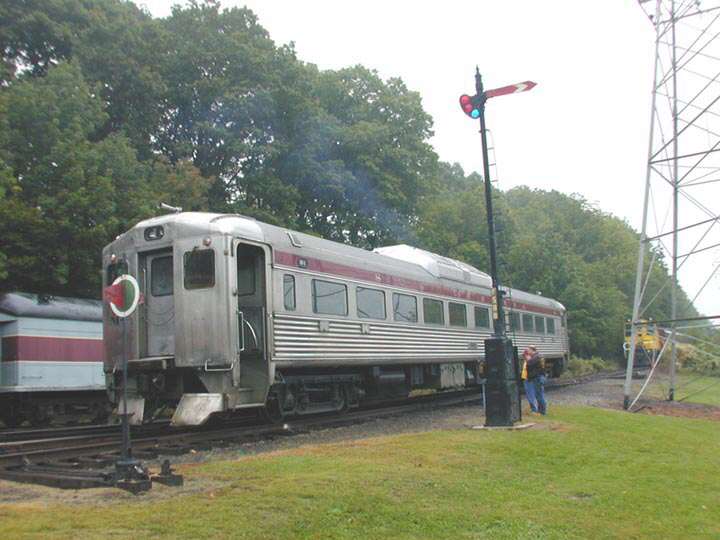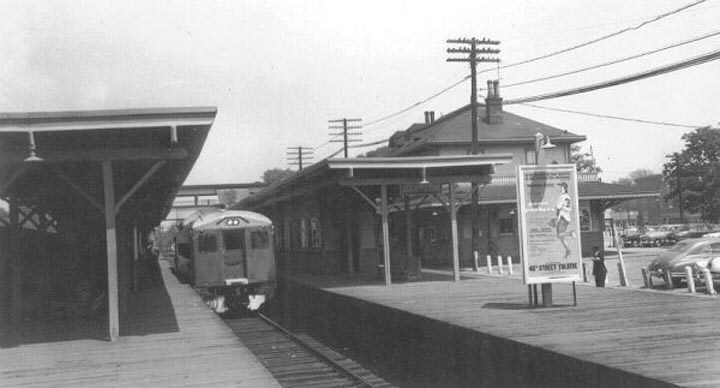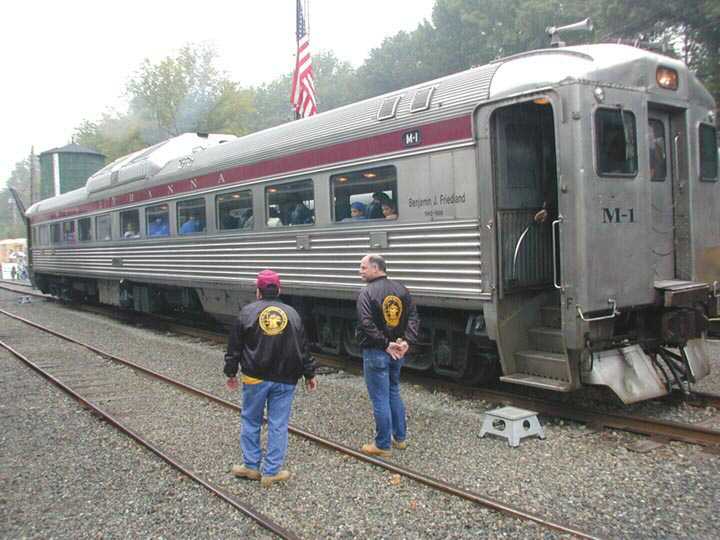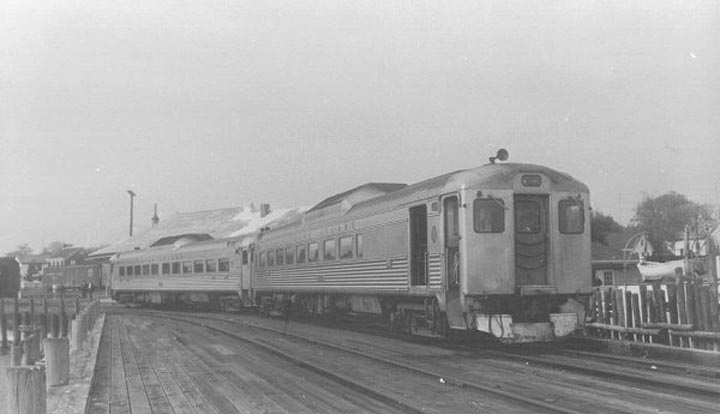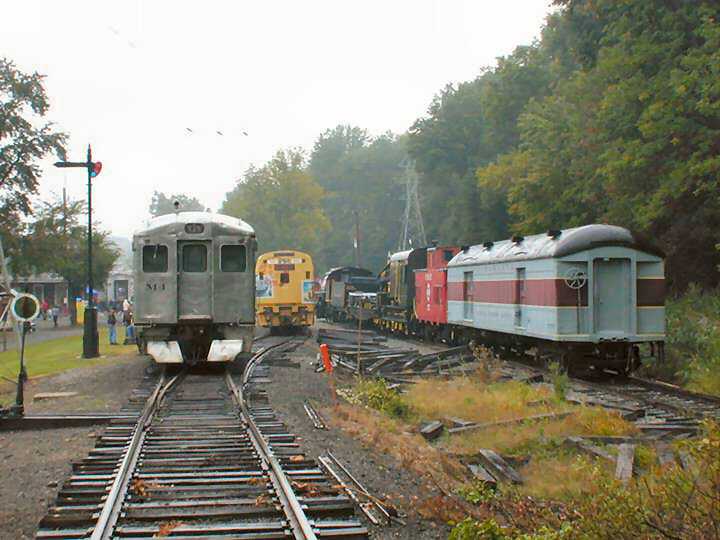BUDD—RDC’S
By Bill Meyer, Bob Mintz and Dr. Joseph Lechner
(Article updated Winter 2014)
The Budd Co. built 398 Rail Diesel Cars between 1949 and 1962 for both import and export. They were 85-foot stainless steel cars and were shot welded together.
62 were exported and 336 cars were used in North America, of which 26 different roads purchased them. The “dome” on top of an RDC was heat exchangers for the car’s air conditioning, and exhaust from the (usually two) diesel engines.
The New York Central received their first pair in April 1950. The Boston & Maine was the largest owner operating 109 RDCs including all of the RDC-9 models.
Then New Haven had a fleet of 45 units. In the 1970s, Amtrak also ran RDCs. In Canada, the Canadian National, Canadian Pacific and British Columbia Railway all ran RDCs. In 1978 with the formation of VIA, they also ran acquired RDCs.
Some commuter lines, such as the Virginia Railway Express, used the RDC-9 which looks almost identical to an RDC-1 except that it has only one diesel engine instead of two. An RDC-9 doesn’t have enough power to run alone, but it does have sufficient power to operate in a long train with twin-motored RDCs.
Most other railroads used RDCs for branch lines that didn’t generate enough traffic to justify a locomotive hauling traditional passenger cars. On those roads, the train usually consisted of a single RDC; in that case, twin-motor power was essential.
UNITED STATES/CANADA
RDC-1 (MAIL) 159/35
RDC-2 28/28
RDC-3 27/15
RDC-4 5/9
RDC-9 30/0
Lionel first produced RDCs in 1957 and in 1977, MPC issued a Budd Set as an uncataloged Service Station Set.
Black Beetle
In the summer of 1966, a Budd RDC-3 became the fastest vehicle on U.S. Rails. M-497 was a creation of the Cleveland Technical Center, a $1 million research laboratory located at New York Central’s Collinwood (Ohio) shops. The purpose of “Black Beetle”, as it was nicknamed, was to determine whether high-speed passenger service was feasible over existing NYC tracks.
A mechanical engineer named Donald C. Wetzel designed the M-497 and supervised its construction. Wetzel used jet power because that was the least expensive way to get a car moving at speeds in excess of 180 mph. He purchased two surplus General Electric J47 engines from the United States Air Force. These were mounted on the roof of the stainless-steel Budd car, still housed in their wing pod from a B-36H Peacemaker *.
For the test runs, New York Central chose a portion of its main line between Toledo OH and Butler IN, because this was the longest stretch of tangent multiple track in the world. The line was closed to regular traffic for several days while jet-powered experiments were conducted. On July 23 1966, near Bryan OH, the M497 was clocked at 183.85 mph. According to Christopher Dawson, curator of urban and industrial history for the Western Reserve Historical Society in Cleveland, Wetzel was throttling back when he hit the speed testing section, so he had actually been going even faster just moments earlier.
Black Beetle’s officially-documented speed of 183.85 mph easily surpassed the previous U.S. record of 127.1 mph set by the Broadway Limited on the Pennsylvania Railroad in 1905. What’s more, M-497’s record still stands. It has not been bested by any North American train since then-not by Turbo Train (170.8 mph on December 20, 1967); not by Metroliner (168.3 mph); and not by AMTRAK’s Acela (168 mph on October 11, 1999).
According to Bob Cosgrove of Detroit Historical Museum, the New York Central regarded this experiment as a success, and concluded that its tracks COULD accommodate high-speed travel without special preparation. After its brief stint in the limelight, M497 was towed back to Cleveland where its jet engines were removed, its torque converters were reconnected, and its seats were replaced. The RDC3 then spent the rest of its life in commuter service on NYC’s Hudson Line between Poughkeepsie and Harmon NY.
After the 1968 Penn Central merger, M497 was renumbered #97, then renumbered again to #98 a year later. #98 was sold to Conrail in 1976, then was signed over to MTA but never operated by them. It was cannibalized for parts in 1977, then it moldered on a weed-grown siding in Croton until it was finally scrapped in 1984.
Meanwhile, the ever-resourceful Cleveland Technical Center recycled M-497’s jet engines to create a snow blower that was dispatched to wintry Buffalo NY. There, it cleared drifts from the Central’s rail yards, but it also blew away some ties and most of the ballast. After some tweaking, it became a useful piece of maintenance-of-way equipment. It inspired jet-powered snow blowers on several other railroads, as well as Lionel #6-29867, which was introduced in NYC colors (2007) but has since been offered in several additional road names.
Lionel #38429 (2011) represents the M-497 in its New York Central livery. However, Lionel’s model depicts an all-passenger RDC-1, while the real M-497 was actually an RDC-3. An RDC-3 had a 17-foot baggage-express section, a 15-foot Railway Post Office compartment, and seating for 49 passengers. M-497 was built with its jet engines at the passenger end; see http://rr-fallenflags.org/nyc/nyc-m497bll.jpg. Only MTH Electric Trains produces models of the RDC-3 for O gauge 3-rail.
Lionel seldom misses an opportunity to start a collectible series by issuing cars and locomotives in new road names. #38425, a jet-powered RDC in Rock Island livery, is a figment of Lionel’s imagination. The CRI&P did own three Budd RDC-3s, but did not experiment with jet power. Lionel uses roster number #752 on its jet-powered RDC-1; the companion non-powered RDC-1 and RDC-4 are numbered #750 and #751, respectively. On the real Rock Island, these numbers belonged to three unusual passenger diesels that were designated AB6. These Electro-Motive E6 B units were equipped with a cab and a set of operator controls. Rock Island used them on its Rocky Mountain Rocket. The train ran from Chicago to Limon CO powered by a multiple-unit diesel lashup. It split into two sections at Limon. Part of the train went to Colorado Springs behind an AB6, while the rest of its cars went to Denver with the remaining diesel units.
* Aficionados of military aviation will recall that the Convair B-36 was powered by six 3,800-hp reciprocating engines and four jet engines (each providing 5,200 lb of thrust). At 162′ long and 230′ wingspan with a takeoff weight of 410,000 lbs, the B-36 was for many years the world’s largest mass-produced airplane. It was the backbone of Strategic Air Command’s intercontinental nuclear force during the 1950s. You can see several of these behemoths in flight in the movie “Strategic Air Command” (1955; Paramount) starring James Stewart.
#2276W Budd RDC Commuter Set (404, 2559, 2559)
#1766 B&O Budd Cars SSS (8766, 8767, 8768)
#18506 Canadian National “D202”/“D203” Powered coach, Dummy baggage, (18507 and 18508)
#18512 Canadian National “D200”/“D250” Dummy coaches, (18510 and 18511)
38311 #2276W Budd RDC 3-Car Commuter Set (38325, 38326, 38327)
38313 Budd RDC 2-Pack (38314, 38322)
#38401 New York Central M-497 Jet-Powered Budd RDC
#38428 Alaska Powered RDC Coach “711”
#35490 Alaska Non-Powered RDC Combination Car “702”
#35499 Alaska Non-Powered RDC Coach “712”
#38425 Rock Island Jet-Powered RDC Coach “752”
#35498 Rock Island Non-Powered RDC Coach “750”
#35497 Rock Island Non-Powered RDC Combination Car “751”
#38429 NYC M-497 Powered Jet Car
#35481 Passenger “M-498” Car for NYC Jet-Powered Budd RDC #M-497
# 27917 “#2550” B&O Mail & Baggage Budd Car (Non Powered)

